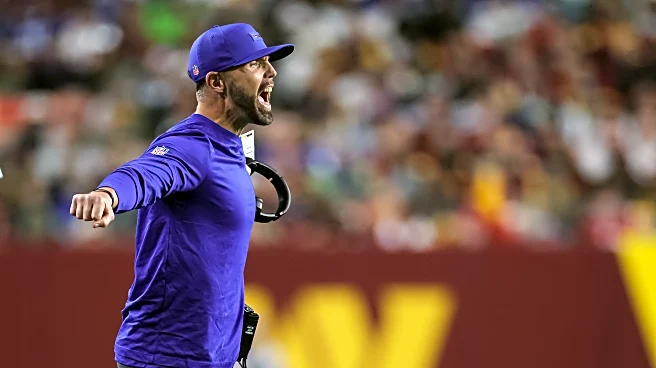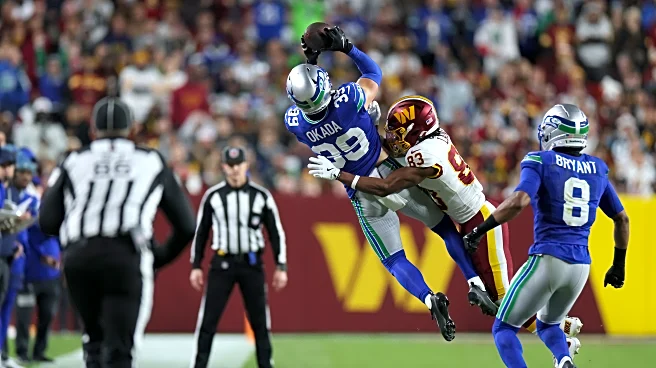What's Happening?
The Seattle Seahawks have made a notable roster adjustment by re-signing running back Myles Gaskin, just one day after releasing him in favor of Velus Jones Jr. The decision to bring back Gaskin follows
a brief evaluation of Jones, who was initially signed for his versatility as a return specialist, wide receiver, and running back. However, after a short stint, the Seahawks opted to reunite with Gaskin, who was previously released to make room for Jones. Gaskin, a former standout at the University of Washington, was initially signed by Seattle on October 1 to provide depth amid injuries. Despite the presence of Ken Walker and Zach Charbonnet, the Seahawks appear to value Gaskin's experience and potential contribution to the team.
Why It's Important?
This roster move highlights the Seahawks' strategic approach to maintaining depth and versatility in their running back lineup. By re-signing Gaskin, Seattle ensures they have a reliable option with proven college performance, which could be crucial as the team navigates the season. The decision also reflects the team's adaptability in response to player evaluations and performance during practice sessions. With the Seahawks currently favored against the Arizona Cardinals, maintaining a strong and flexible roster could enhance their competitive edge in upcoming games. The move underscores the importance of having experienced players ready to step in, especially in a league where injuries can quickly alter team dynamics.
What's Next?
The Seahawks are preparing for their next game against the Arizona Cardinals, where they are currently 6.5-point favorites. The team's focus will likely be on leveraging their strengthened running back lineup to secure a win. Head coach Mike Macdonald has expressed confidence in rookie left guard Grey Zabel, whose performance could further bolster the Seahawks' offensive line. As the season progresses, Seattle will continue to assess their roster needs and make adjustments to optimize their chances for success. The re-signing of Gaskin may also prompt further evaluations of other players to ensure the team remains competitive.
Beyond the Headlines
The Seahawks' decision to re-sign Gaskin after a brief release of Jones highlights the complexities of roster management in professional sports. It raises questions about the evaluation processes teams use to determine player fit and potential contributions. This move also reflects the challenges teams face in balancing immediate needs with long-term strategic goals. The Seahawks' ability to quickly adapt and make roster changes demonstrates their commitment to maintaining a competitive edge, which is essential in the highly dynamic environment of the NFL.













